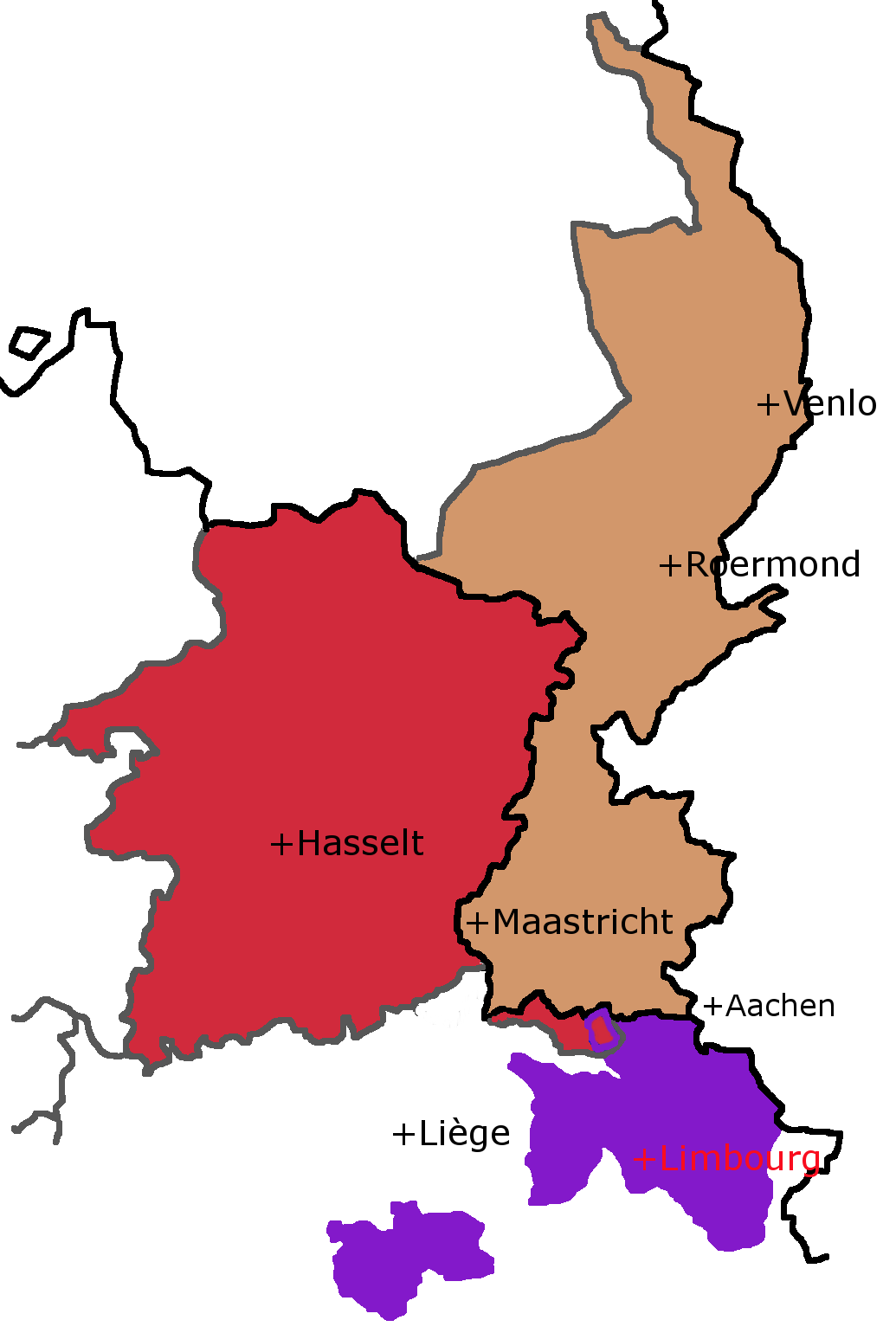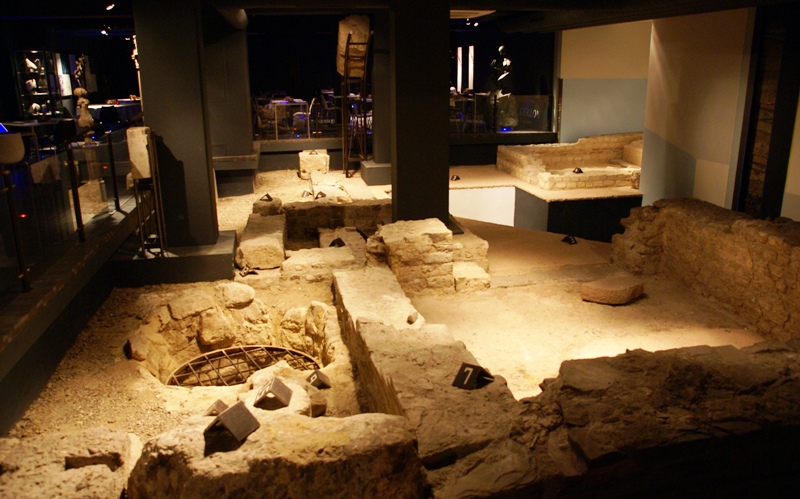|
Blerick
Blerick (; li, Bliërik ; ) is a city district of the Dutch municipality of Venlo. It lies on the west bank of the Meuse and its origin goes back to the Roman era as a military stronghold and settlement en route from Mosa Trajectum (Maastricht) to Noviomagus (Nijmegen). Blerick can be found on the Peutinger Table as Blariacum. Up to the second world war Blerick formed together with Baarlo and Maasbree one municipality. Under German rule Blerick became part of the municipality of Venlo. In 2001, Blerick had 25875 inhabitants. The built-up area of the city district was 7.27 km², and contained 10866 residences.Statistics Netherlands (CBS), ''Bevolkingskernen in Nederland 2001'' . Statistics are for the continuous built-up area. Transportation *Blerick railway station Blerick is a railway station located in Blerick, Netherlands. The station was opened in 1868 and is located on the Venlo–Eindhoven railway and the Nijmegen–Venlo railway. The station is operated by Nederla ... [...More Info...] [...Related Items...] OR: [Wikipedia] [Google] [Baidu] |
Blerick Railway Station
Blerick is a railway station located in Blerick, Netherlands. The station was opened in 1868 and is located on the Venlo–Eindhoven railway and the Nijmegen–Venlo railway. The station is operated by Nederlandse Spoorwegen and Arriva Arriva plc is a British multinational public transport company headquartered in Sunderland, England.train services call at this station: *Express ''Intercity'' service: (Schiphol–Utrecht–'s-Hertogenbosch–)Eindhoven–Helmond–Venlo *Local ''Stoptrein'' service: Nijmegen–Venlo–Roermond Bus services * Buses departing from the station proper: ** Bus 70: Venlo Stati ...[...More Info...] [...Related Items...] OR: [Wikipedia] [Google] [Baidu] |
Meuse
The Meuse ( , , , ; wa, Moûze ) or Maas ( , ; li, Maos or ) is a major European river, rising in France and flowing through Belgium and the Netherlands before draining into the North Sea from the Rhine–Meuse–Scheldt delta. It has a total length of . History From 1301 the upper Meuse roughly marked the western border of the Holy Roman Empire with the Kingdom of France, after Count Henry III of Bar had to receive the western part of the County of Bar (''Barrois mouvant'') as a French fief from the hands of King Philip IV. In 1408, a Burgundian army led by John the Fearless went to the aid of John III against the citizens of Liège, who were in open revolt. After the battle which saw the men from Liège defeated, John ordered the drowning in the Meuse of suspicious burghers and noblemen in Liège. The border remained stable until the annexation of the Three Bishoprics Metz, Toul and Verdun by King Henry II in 1552 and the occupation of the Duchy of Lorraine by the ... [...More Info...] [...Related Items...] OR: [Wikipedia] [Google] [Baidu] |
Venlo
Venlo () is a List of cities in the Netherlands by province, city and List of municipalities of the Netherlands, municipality in the southeastern Netherlands, close to the border with Germany. It is situated in the province of Limburg (Netherlands), Limburg, about 50 km east of the city of Eindhoven, 65 km north east of the provincial capital Maastricht, and 45 km north west of Düsseldorf in Germany. The municipality of Venlo counted 101,578 inhabitants as of January 2019.Statistics Netherlands (CBS), Retrieved on 6 March 2019. History Early history Roman and Celtic coins have been found in Venlo; it was speculated to have been the settlement known as ''Sablones'' on the Roman road connecting Maastricht with Xanten, but the little evidence there is concerning the location of Sablones speaks against this thought while there is no evidence in support of it. Blerick, on the west bank, was known as ''Blariacum''. Documents from the 9th century mention Venlo as a trade post; it ... [...More Info...] [...Related Items...] OR: [Wikipedia] [Google] [Baidu] |
List Of Sovereign States
The following is a list providing an overview of sovereign states around the world with information on their status and recognition of their sovereignty. The 206 listed states can be divided into three categories based on membership within the United Nations System: 193 UN member states, 2 UN General Assembly non-member observer states, and 11 other states. The ''sovereignty dispute'' column indicates states having undisputed sovereignty (188 states, of which there are 187 UN member states and 1 UN General Assembly non-member observer state), states having disputed sovereignty (16 states, of which there are 6 UN member states, 1 UN General Assembly non-member observer state, and 9 de facto states), and states having a special political status (2 states, both in free association with New Zealand). Compiling a list such as this can be a complicated and controversial process, as there is no definition that is binding on all the members of the community of nations concerni ... [...More Info...] [...Related Items...] OR: [Wikipedia] [Google] [Baidu] |
Netherlands
) , anthem = ( en, "William of Nassau") , image_map = , map_caption = , subdivision_type = Sovereign state , subdivision_name = Kingdom of the Netherlands , established_title = Before independence , established_date = Spanish Netherlands , established_title2 = Act of Abjuration , established_date2 = 26 July 1581 , established_title3 = Peace of Münster , established_date3 = 30 January 1648 , established_title4 = Kingdom established , established_date4 = 16 March 1815 , established_title5 = Liberation Day (Netherlands), Liberation Day , established_date5 = 5 May 1945 , established_title6 = Charter for the Kingdom of the Netherlands, Kingdom Charter , established_date6 = 15 December 1954 , established_title7 = Dissolution of the Netherlands Antilles, Caribbean reorganisation , established_date7 = 10 October 2010 , official_languages = Dutch language, Dutch , languages_type = Regional languages , languages_sub = yes , languages = , languages2_type = Reco ... [...More Info...] [...Related Items...] OR: [Wikipedia] [Google] [Baidu] |
Limburg (Netherlands)
Limburg (, ) is the southernmost of the twelve provinces of the Netherlands. It is bordered by Gelderland to the north and by North Brabant to its west. Its long eastern boundary forms the international border with the state of North Rhine-Westphalia in Germany. To the west is the international border with the similarly named Belgian province of Limburg, part of which is delineated by the river Meuse. The Vaalserberg is on the extreme southeastern point, marking the tripoint of the Netherlands, Germany and Belgium. Limburg's main municipalities are the provincial capital Maastricht (population 120,837 as of January 2022), Venlo (population 102,176) in the northeast, as well as Sittard-Geleen (population 91,760, bordering both Belgium and Germany) and Heerlen (population 86,874) in the south. More than half of the population, approximately 650,000 people, live in the south of Limburg, which corresponds to roughly one-third of the province's area proper. In South Limburg, most peop ... [...More Info...] [...Related Items...] OR: [Wikipedia] [Google] [Baidu] |
Rijksweg 73
The A73 motorway (Dutch: Rijksweg 73) is a motorway in the Netherlands. It is 106 kilometers in length and connects the A50 at the Ewijk interchange in Beuningen through Venlo and Roermond to the Het Vonderen interchange with the A2 in Maasbracht. For its entire route, the A73 follows the path of the Meuse The Meuse ( , , , ; wa, Moûze ) or Maas ( , ; li, Maos or ) is a major European river, rising in France and flowing through Belgium and the Netherlands before draining into the North Sea from the Rhine–Meuse–Scheldt delta. It has a t ... river, thereby opening up north and central Limburg to traffic. External links Autosnelwegen.net {{Motorways in the Netherlands Motorways in the Netherlands Motorways in Gelderland Motorways in Limburg (Netherlands) Motorways in North Brabant ... [...More Info...] [...Related Items...] OR: [Wikipedia] [Google] [Baidu] |
Maastricht
Maastricht ( , , ; li, Mestreech ; french: Maestricht ; es, Mastrique ) is a city and a municipality in the southeastern Netherlands. It is the capital and largest city of the province of Limburg. Maastricht is located on both sides of the Meuse ( nl, Maas), at the point where the Jeker joins it. Mount Saint Peter (''Sint-Pietersberg'') is largely situated within the city's municipal borders. Maastricht is about 175 km south east of the capital Amsterdam and 65 km from Eindhoven; it is adjacent to the border with Belgium and is part of the Meuse-Rhine Euroregion, an international metropolis with a population of about 3.9 million, which includes the nearby German and Belgian cities of Aachen, Liège and Hasselt. Maastricht developed from a Roman settlement (''Trajectum ad Mosam'') to a medieval religious centre. In the 16th century it became a garrison town and in the 19th century an early industrial centre. Today, the city is a thriving cultural and regional hub. It beca ... [...More Info...] [...Related Items...] OR: [Wikipedia] [Google] [Baidu] |
Nijmegen
Nijmegen (;; Spanish and it, Nimega. Nijmeegs: ''Nimwèège'' ) is the largest city in the Dutch province of Gelderland and tenth largest of the Netherlands as a whole, located on the Waal river close to the German border. It is about 60 km south east of Utrecht and 50 km north east of Eindhoven. Nijmegen is the oldest city in the Netherlands, the second to be recognized as such in Roman times, and in 2005 celebrated 2,000 years of existence. Nijmegen became a free imperial city in 1230 and in 1402 a Hanseatic city. Since 1923 it has been a university city with the opening of a Catholic institution now known as the Radboud University Nijmegen. The city is well known for the International Four Days Marches Nijmegen event. Its population in 2022 was 179,000; the municipality is part of the Arnhem–Nijmegen metropolitan area, with 736,107 inhabitants in 2011. Population centres The municipality is formed by the city of Nijmegen, incorporating the former villages of Ha ... [...More Info...] [...Related Items...] OR: [Wikipedia] [Google] [Baidu] |
Peutinger Table
' (Latin for "The Peutinger Map"), also referred to as Peutinger's Tabula or Peutinger Table, is an illustrated ' (ancient Roman road map) showing the layout of the ''cursus publicus'', the road network of the Roman Empire. The map is a 13th-century parchment copy of a possible Roman original. It covers Europe (without the Iberian Peninsula and the British Isles), North Africa, and parts of Asia, including the Middle East, Persia, and India. According to one hypothesis, the existing map is based on a document of the 4th or 5th century that contained a copy of the world map originally prepared by Agrippa during the reign of the emperor Augustus (27 BC – AD 14). However, Emily Albu has suggested that the existing map could instead be based on an original from the Carolingian period. The map was likely stolen by the renowned humanist Conrad Celtes, who bequeathed it to his friend, the economist and archaeologist Konrad Peutinger, who gave it to Emperor Maximilian I, as part of a ... [...More Info...] [...Related Items...] OR: [Wikipedia] [Google] [Baidu] |
Baarlo
Baarlo (; li, Baolder ) is a village in the southeastern Netherlands. It is located in the municipality of Peel en Maas, Limburg, about 6 km southwest of Venlo. Name and symbols The oldest mention of the name Baarlo is from 1219. The oldest certificate of the bank of Baarlo dates from 25 January 1377. In 1629 for the first time it used its own seal. The seal shows the Saint Peter, holding a key in his left hand and in his right hand three ropes carrying a shield, on which a stag is shown jumping to the left. At that time, the local lord, schout or pastor sealed the certificates. History Archeological excavations have shown that at the beginning of our calendar people already had settled in Baarlo. Later the Romans came; they built the Roman road between Tongeren and Nijmegen and Oyen (between Baarlo and Kessel). In the 19th century the old church of Baarlo became too small, so the city decided to build a new one. Pierre Cuypers was the architect and the church was fini ... [...More Info...] [...Related Items...] OR: [Wikipedia] [Google] [Baidu] |
.jpg)





